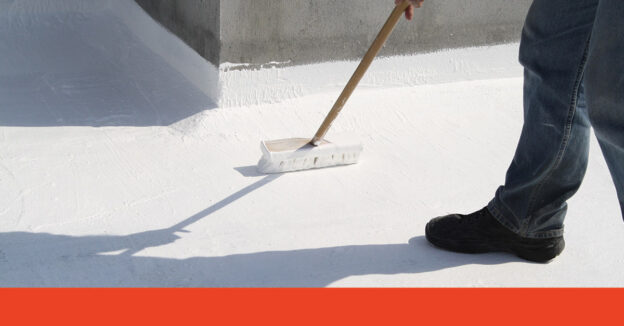ROOF COATINGS VS. ROOF REPLACEMENTS

While both roof coating and roof replacement can restore your roof to like-new condition, there are factors to consider prior to making the decision. When is a roof coating the right solution and when is coating your roof absolutely the wrong decision? Here are some factors to consider:
Existing Roof
What is the existing roof system to which the coating will be applied? A roof with a ballasted system or a layer of pebbles or rocks is not a candidate. A coating can be applied to a modified bitumen roof, but it is extremely difficult to properly clean and prepare the roof in a manner that would assure a good coating installation. Even a smooth single-ply system is a poor candidate: grease and dirt will prevent a good adhesion of the coating. In our experience, the best (and for my mind), the only acceptable candidate for a coating system is a metal roof, properly cleaned, properly prepared, and expertly coated.
Structural Integrity
What are the current problems with the existing roof? Are there large areas of ponding which indicate potential structural problems with the existing roof? Are there multiple roof layers already? Are there problems with the original design of the roof? If any of these are true, then a coating is simply putting a band-aid over the existing problem.
Moisture
Moisture trapped in the existing roof system is probably the most frequent reason roof coatings fail. If you are applying a coating because of leaks, then you can be certain that moisture has already seeped into the subsurface layers of the existing roof. Moisture that is trapped will vaporize. Vapor always rises, and it will try to escape from the bottom up, looking for cracks and crevices to get out. When the roof is coated, those cracks and crevices go away. If the moisture cannot get out, it cooks, and ultimately destroys the coating.
Preparation
Coatings are only as good as the quality of the installation. Roofs must be thoroughly cleaned, or the coating will not adhere properly. Granules on a modified bitumen roof, or dirt and grease on a single-ply roof, can never be totally removed or cleaned. Joints and penetrations should be sealed with fabric prior to applying the coating.
Application
How many layers are being applied? Will a primer be applied first? One layer of topcoat or two? How thick in mills will the layers be, and how consistent will the manual application be? What are the weather conditions? Is there dust in the air (there always is) that will prevent proper adhesion? A coating application can vary significantly depending upon the circumstances that day. Contrast that variability with a single-ply membrane created under consistent, quality-controlled factory conditions.
Warranty
Coating products are available with 10 to 20-year warranties. However, in our experience, few coatings last anywhere near that long, and the longevity of the coating is directly proportional to the quality and the cost of the coating system. A poor coating installation could begin to deteriorate in as little as six months. And even a higher quality installation is unlikely to last 7 – 10 years without a recoating.
The Bottom Line
Coatings can be appropriate given the right circumstances. However, most frequently, a coating is selected because it is the cheapest system without full consideration given to the quality and the life span. Other than metal roofs, our experience is that a coating may be the cheapest short-term system, but not the best long-term value when making your decision.


